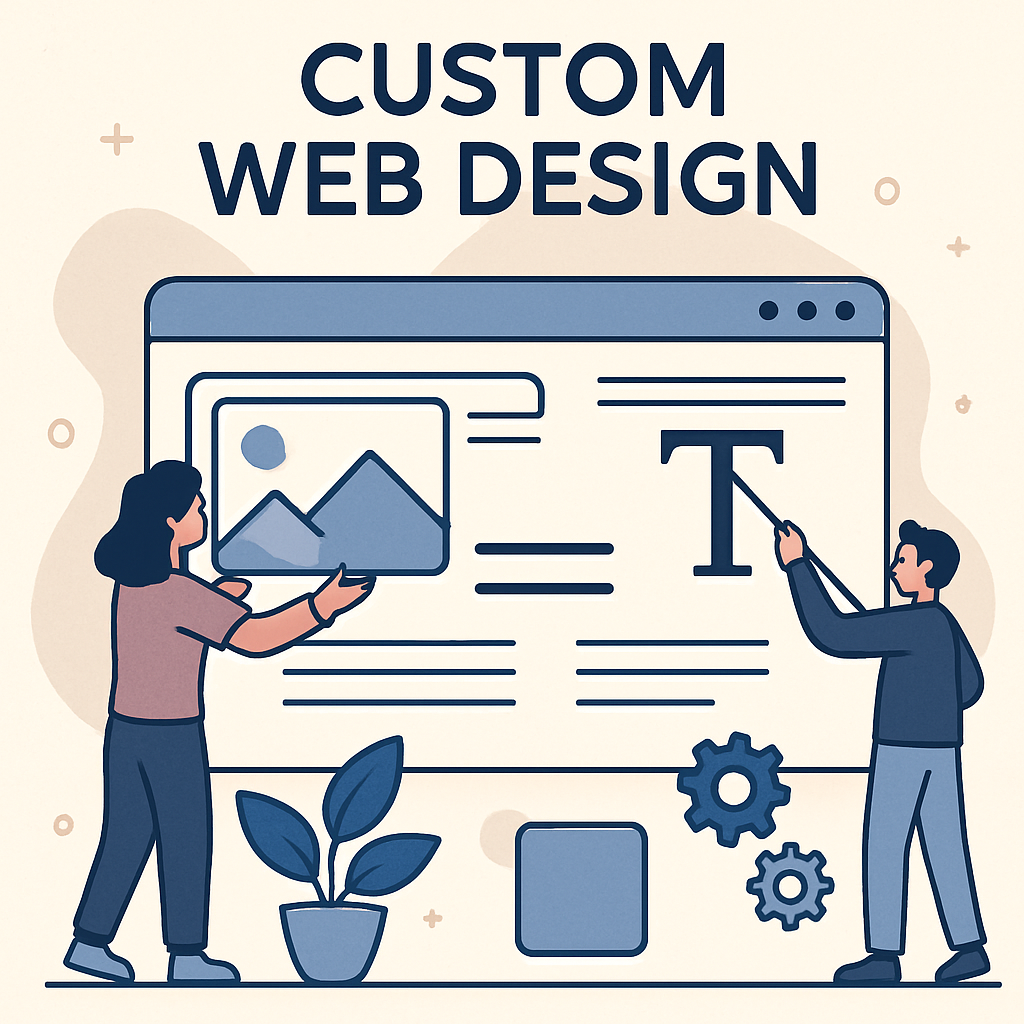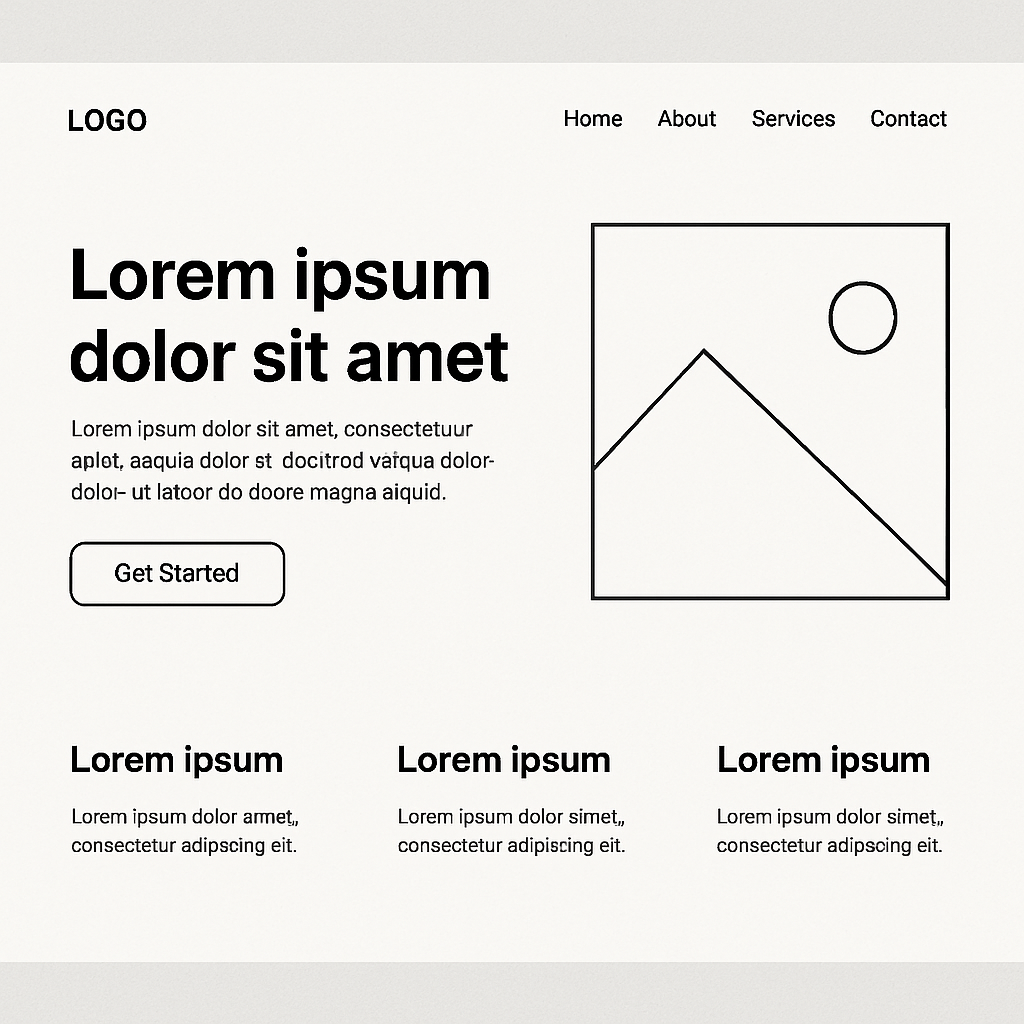Sydney Web Design 2025: Trends & Innovations
Top Trends in Sydney Web Design 2025
In the ever-evolving digital landscape, staying ahead of web design trends is crucial for maintaining a competitive edge. As we delve into 2025, Sydney’s web design scene is witnessing a dynamic shift towards more personalized, efficient, and aesthetically pleasing websites. Whether you’re a small business owner seeking to enhance your online presence or a marketing manager aiming to optimize campaign performance, understanding these trends can provide actionable insights. By integrating these trends into your strategy, you can ensure your website not only attracts but also retains users, offering them an experience that aligns with modern digital expectations.
 Custom web design is no longer a luxury; it’s a necessity. With the increasing demand for unique user experiences, Sydney businesses are leaning towards bespoke designs that reflect their brand identity. Unlike generic templates, custom web designs offer flexibility and scalability, allowing you to tailor every element to your audience’s needs. This approach ensures that your website stands out in a crowded digital marketplace, offering a personalized experience that generic templates simply cannot match.
Custom web design is no longer a luxury; it’s a necessity. With the increasing demand for unique user experiences, Sydney businesses are leaning towards bespoke designs that reflect their brand identity. Unlike generic templates, custom web designs offer flexibility and scalability, allowing you to tailor every element to your audience’s needs. This approach ensures that your website stands out in a crowded digital marketplace, offering a personalized experience that generic templates simply cannot match.
Why Custom Web Design Matters
Custom web design enables you to create a distinct digital identity that resonates with your target market. By focusing on user-centric design, you can enhance user engagement and foster a deeper connection with your audience. This approach not only builds brand loyalty but also encourages repeat visits, ultimately driving conversions. By tailoring your site’s design to meet specific user needs, you create a more intuitive and enjoyable user experience.
Moreover, a custom design offers the flexibility to adapt and evolve as your business grows. Unlike fixed templates, bespoke designs can be modified to incorporate new features, ensuring your website remains current. This adaptability is crucial in a digital landscape where user expectations and technologies are constantly changing.
Strategies for Effective Custom Web Design
- Identify Your Unique Selling Points (USPs): Understand what sets your business apart and incorporate these elements into your design. Highlighting your USPs in your website’s design can communicate your brand’s unique value to visitors instantly.
- Engage Local Expertise: Collaborate with Sydney-based web design services that understand the local market and can translate your vision into reality. Local designers bring insights into regional preferences and trends, ensuring your website resonates well with your target audience.
- Incorporate Feedback Loops: Regularly seek feedback from users to refine and enhance your website. Implementing a system for user feedback helps you stay aligned with your audience’s needs and preferences, making iterative improvements where necessary.
- Focus on User Experience (UX): Prioritize navigation, load time, and mobile responsiveness to ensure a seamless user journey. A well-designed UX fosters increased engagement and reduces bounce rates, encouraging users to explore more of your site.
The Rise of Minimalist Design
 Minimalism continues to dominate the web design landscape. This trend is characterized by clean lines, ample white space, and a focus on functionality over frills. The minimalist approach not only enhances aesthetics but also improves site performance and user experience. By stripping away unnecessary elements, minimalist designs ensure that the user’s attention remains on the content and key messages.
Minimalism continues to dominate the web design landscape. This trend is characterized by clean lines, ample white space, and a focus on functionality over frills. The minimalist approach not only enhances aesthetics but also improves site performance and user experience. By stripping away unnecessary elements, minimalist designs ensure that the user’s attention remains on the content and key messages.
Benefits of Minimalist Design
- Improved Load Times: Simpler designs require fewer resources, leading to faster load times. Quick loading times enhance user satisfaction and reduce bounce rates, as users are less likely to abandon sites that load promptly.
- Enhanced Usability: With fewer distractions, users can focus on essential content and calls-to-action. This clarity in design helps users to easily find what they’re looking for, improving their overall experience on your site.
- Timeless Appeal: A minimalist design remains relevant longer, reducing the need for frequent updates. The simplicity and elegance of minimalist design ensure that your website looks modern and fresh for longer periods.
How to Achieve Minimalism
- Audit Your Existing Site: Identify elements that don’t add value and remove them. Conduct a thorough review of your website to pinpoint unnecessary components that may clutter the design or confuse users.
- Prioritize Content: Highlight key information and use whitespace strategically to guide the user’s eye. Effective use of whitespace can enhance readability and focus, directing users to important content naturally.
- Opt for a Simple Color Palette: Use neutral tones with occasional pops of color to maintain interest without overwhelming. A restrained color scheme contributes to a clean and professional appearance, while strategic splashes of color can draw attention to important elements.
- Streamline Navigation: Simplify your site’s navigation to ensure users can find what they need quickly and easily. Clear and concise navigation menus improve user experience and help maintain a minimalist aesthetic.
Integration of Advanced Technologies
As technology advances, so do the expectations of web users. Sydney web designers are increasingly integrating cutting-edge technologies to provide richer user experiences and streamline operations. These technologies not only enhance user engagement but also offer businesses innovative ways to connect with their audience.
Key Technologies to Watch
- AI and Machine Learning: Personalize user experiences by analyzing behavior and adjusting content dynamically. AI-driven insights can tailor content and recommendations to individual users, increasing engagement and satisfaction.
- Voice Search Optimization: With the rise of smart speakers and voice assistants, optimizing for voice search is becoming essential. Ensuring your site is voice-search friendly can improve accessibility and reach, tapping into the growing number of users who prefer voice commands.
- Augmented Reality (AR): Enhance product visualization, particularly beneficial for e-commerce platforms. AR can provide users with an immersive experience, allowing them to interact with products in a more engaging way before making a purchase.
- Chatbots and Virtual Assistants: Implement these tools to offer 24/7 customer service and support. Chatbots can handle common inquiries quickly and efficiently, freeing up human resources for more complex tasks.
Steps to Implement Advanced Technologies
- Assess Your Needs: Determine which technologies align with your business goals and audience preferences. A thorough understanding of your objectives and user base will guide technology integration decisions.
- Partner with Experts: Work with web design services in Sydney that specialize in these technologies. Expertise in advanced technologies ensures seamless integration and maximizes their potential benefits for your website.
- Test and Iterate: Continuously test the effectiveness of these technologies and make adjustments as needed. Regular testing helps to refine the user experience and ensure that technology enhancements are truly beneficial.
- Educate Your Team: Ensure that your staff is trained to manage and utilize these technologies effectively. Proper training is crucial for maximizing the benefits of new tech tools and ensuring smooth operation.
The Importance of Responsive Design
 by Annie Spratt (https://unsplash.com/@anniespratt)
by Annie Spratt (https://unsplash.com/@anniespratt)
In a mobile-first world, responsive design is critical. Ensuring your website performs well on all devices is not just a trend but a fundamental requirement. With an increasing number of users accessing websites via smartphones and tablets, responsive design can significantly impact user experience and search engine rankings. A responsive website adapts to any device, providing a consistent and optimal viewing experience.
Benefits of Responsive Design
- Increased Mobile Traffic: A mobile-friendly site attracts and retains more visitors. As mobile usage continues to rise, a responsive design ensures your site is accessible and functional across all devices.
- Improved SEO: Search engines favor responsive sites, improving your visibility. A responsive design contributes to higher search rankings, making it easier for potential customers to find your site.
- Cost Efficiency: A single responsive design reduces the need for separate mobile and desktop versions. This consolidation reduces development and maintenance costs, while also ensuring a uniform user experience across devices.
How to Implement Responsive Design
- Adopt a Mobile-First Approach: Design for mobile devices first, then scale up for larger screens. Starting with mobile ensures that essential features and content are prioritized, enhancing the mobile user experience.
- Use Flexible Grids and Layouts: Ensure your design can adjust to different screen sizes seamlessly. A flexible layout adapts to various devices, maintaining the integrity and aesthetics of your design.
- Test Across Devices: Regularly check how your site performs on various devices and browsers. Comprehensive testing ensures that your site functions optimally across all platforms and identifies potential issues early.
- Optimize Touch Features: Enhance usability by ensuring touch elements are easy to interact with on smaller screens. Optimizing for touch improves navigation and engagement on mobile devices, enhancing user satisfaction.
Sustainable Web Design Practices
As awareness of environmental issues grows, sustainable web design is gaining traction. This approach focuses on reducing the carbon footprint of websites by optimizing performance and efficiency. Sustainable practices not only benefit the environment but can also improve site speed and user satisfaction.
Principles of Sustainable Web Design
- Efficient Coding: Use clean, minimal code to reduce server load and energy consumption. Efficient coding practices lead to faster websites that are more environmentally friendly.
- Optimized Media: Compress images and videos to decrease loading times and data usage. Media optimization is crucial for improving performance and reducing the environmental impact of data-heavy content.
- Green Hosting: Choose web hosting services that utilize renewable energy sources. Green hosting providers support sustainability goals and can enhance your brand’s eco-friendly image.
- Reduce Digital Waste: Regularly audit and remove outdated or unnecessary content. Streamlining your website reduces clutter and energy consumption, contributing to a leaner, more efficient digital presence.
Steps to Adopt Sustainable Practices
- Evaluate Your Current Impact: Analyze your website’s energy consumption and identify areas for improvement. Understanding your environmental impact is the first step towards making meaningful changes.
- Optimize Your Content: Regularly audit and optimize media files and code. Continuous optimization efforts ensure that your site remains efficient and minimizes its carbon footprint.
- Choose Eco-Friendly Partners: Collaborate with web design services in Sydney that prioritize sustainability. Partnering with like-minded businesses strengthens your commitment to sustainable practices and enhances your credibility.
- Promote Sustainability Efforts: Transparently communicate your sustainability initiatives to users. Sharing your efforts can build goodwill and differentiate your brand in a competitive market.
Final Thoughts
Staying abreast of web design trends is essential for maintaining a competitive edge in Sydney’s digital market. By embracing custom web design, minimalist aesthetics, advanced technologies, responsive design, and sustainable practices, you can create a website that not only meets user expectations but also drives business growth. These trends collectively contribute to a robust digital presence that resonates with users and reflects modern values.
Implementing these trends requires a strategic approach and collaboration with experienced professionals. As you navigate the evolving web design landscape, prioritize solutions that are both innovative and practical, ensuring long-term success for your digital presence. By committing to continuous learning and adaptation, your business can thrive in the ever-changing digital world.

